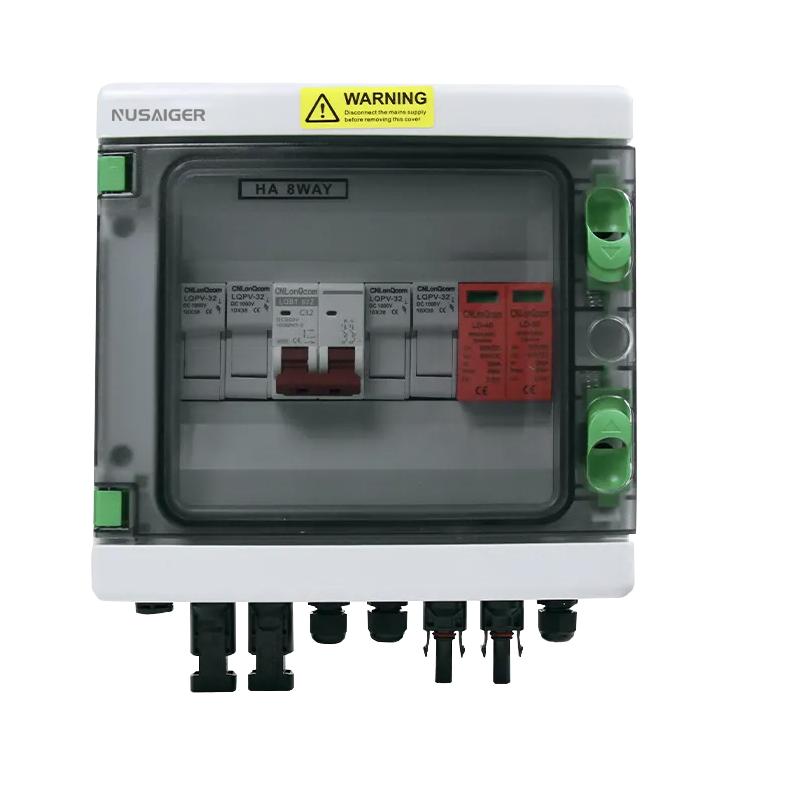How PV Combiner Boxes Improve System Efficiency and Safety in Commercial Solar Projects
Commercial and utility-scale solar installations face complex challenges when it comes to performance optimization, operational safety, and cost-efficiency. As solar projects scale in size, the role of system components like PV combiner boxes becomes significantly more critical. These boxes not only consolidate multiple strings of photovoltaic (PV) panels but also serve as hubs for protection, monitoring, and long-term performance improvement.
In this comprehensive guide, we explore how PV combiner boxes contribute to overall solar system efficiency and safety in commercial projects. From minimizing energy losses to ensuring rapid fault isolation and protection from electrical surges, this article outlines everything engineers, project managers, and procurement officers need to know.
1. The Strategic Role of PV Combiner Boxes in Commercial Solar
Unlike small residential systems, commercial solar projects involve dozens to hundreds of PV strings. Without a combiner box, managing this scale of DC wiring would be unfeasible. The PV combiner box acts as a centralized point where multiple input strings are combined into fewer outputs, typically directed to inverters or DC disconnects.
1.1 Centralization of Power Flow
- Reduces wiring complexity across vast installations.
- Consolidates power to optimize inverter performance.
- Simplifies layout for future maintenance and expansion.
1.2 Interface for Safety and Monitoring
- Integrates fuses or circuit breakers for each string.
- Includes surge protection devices (SPDs) to prevent lightning-induced damage.
- Can incorporate real-time current and voltage monitoring sensors.
2. Enhancing Electrical Efficiency in Large-Scale Systems
One of the primary goals in commercial PV design is minimizing energy losses across wiring and junctions. Here’s how combiner boxes contribute:
2.1 Reduced Cable Lengths and Conduit Costs
By bringing string wires to a single combiner box, installers avoid long, individual cable runs to the inverter. This significantly cuts down on resistance and cost.
2.2 Busbar Design Optimization
Modern combiner boxes use heavy-duty copper or tin-plated aluminum busbars, reducing resistive losses when merging currents from multiple strings.
2.3 Voltage Balancing Across Strings
Combiner boxes with integrated monitoring modules allow early detection of voltage imbalances, helping maintain maximum power point tracking (MPPT) efficiency across strings.
3. Improving Safety Standards Across the PV System
Safety remains paramount, especially in commercial systems with high voltages (1000V or 1500V DC). PV combiner boxes directly address several risk areas:
3.1 Overcurrent Protection
Each string is protected by a fuse or miniature circuit breaker (MCB), preventing damage or fire due to overcurrent scenarios.
3.2 Arc Fault Reduction
Properly sized and installed combiner boxes reduce the likelihood of arc faults caused by loose terminals or overloaded circuits.
3.3 Ground Fault Detection
Combiner boxes designed for commercial applications often include ground fault indication systems, which alert operators to hazardous leakage currents.
3.4 SPD Integration
High-quality Type 2 DC surge protection devices safeguard the system from electrical surges, a common risk in areas prone to lightning.
4. Advanced Monitoring in Commercial PV Combiner Boxes
Real-time data from combiner boxes can dramatically increase visibility and system uptime:
- String-level current sensors provide granular performance data.
- RS485/Modbus or Ethernet interfaces allow SCADA integration.
- Onboard temperature and humidity sensors track internal environment.
- Fault alerts are transmitted directly to control centers.
5. Cost Optimization and ROI Enhancement
Though combiner boxes add upfront costs, their impact on long-term savings is significant:
- Lower O&M Costs: Monitoring allows faster fault isolation, reducing technician hours.
- Extended Equipment Life: Overvoltage and overcurrent protection preserve inverter and panel longevity.
- Reduced Downtime: Early fault detection ensures uninterrupted solar generation.
- Insurance & Compliance: Proper protection enhances insurance coverage eligibility and meets NEC/IEC safety codes.
6. Design Considerations for Commercial Projects
6.1 Environmental Ratings
For outdoor installations, select IP65+ or NEMA 4X rated boxes to ensure protection against rain, dust, and UV radiation.
6.2 String Configuration
Typical commercial combiner boxes handle 8 to 32 strings. Customize the layout based on inverter input capacity and array configuration.
6.3 Maintenance Accessibility
Choose boxes with clear labeling, hinged doors, and internal spacing that facilitates quick maintenance or fuse replacement.
7. Case Study: 2MW Commercial Solar Farm
In a recent 2MW rooftop installation, PV combiner boxes with 16-string inputs and integrated monitoring helped reduce annual maintenance cost by 22% and improved fault detection time by 60%. The system utilized Type 2 SPDs and 1000V-rated MCBs, achieving full compliance with IEC 61439 standards.
8. Frequently Asked Questions
Q1: Are smart combiner boxes worth the investment for commercial projects?
Yes, especially for systems above 500kW, as they enable preventive maintenance and minimize response time to issues.
Q2: How often should combiner boxes be inspected?
Quarterly inspections are ideal for commercial systems, with additional checks after heavy storms or power outages.
Q3: Can combiner boxes be upgraded post-installation?
Some models allow for retrofitting with monitoring modules or upgraded SPDs, but physical space and electrical capacity must be verified first.
9. Conclusion
In large-scale solar applications, PV combiner boxes are far more than passive junction points. They are integral to improving system efficiency, ensuring safety, and reducing operational costs. With proper selection, installation, and monitoring integration, these devices can significantly enhance the ROI and reliability of commercial solar investments.



